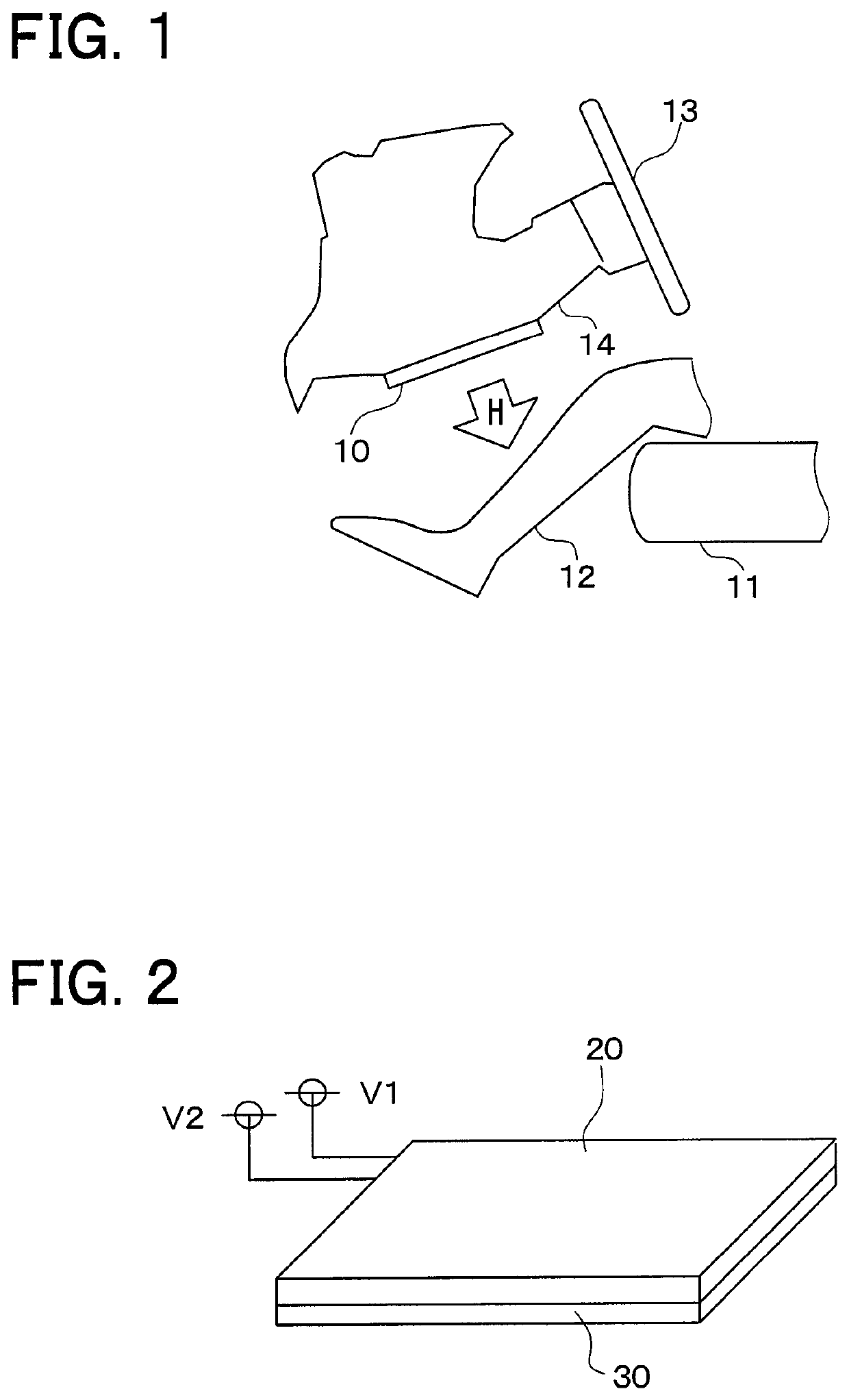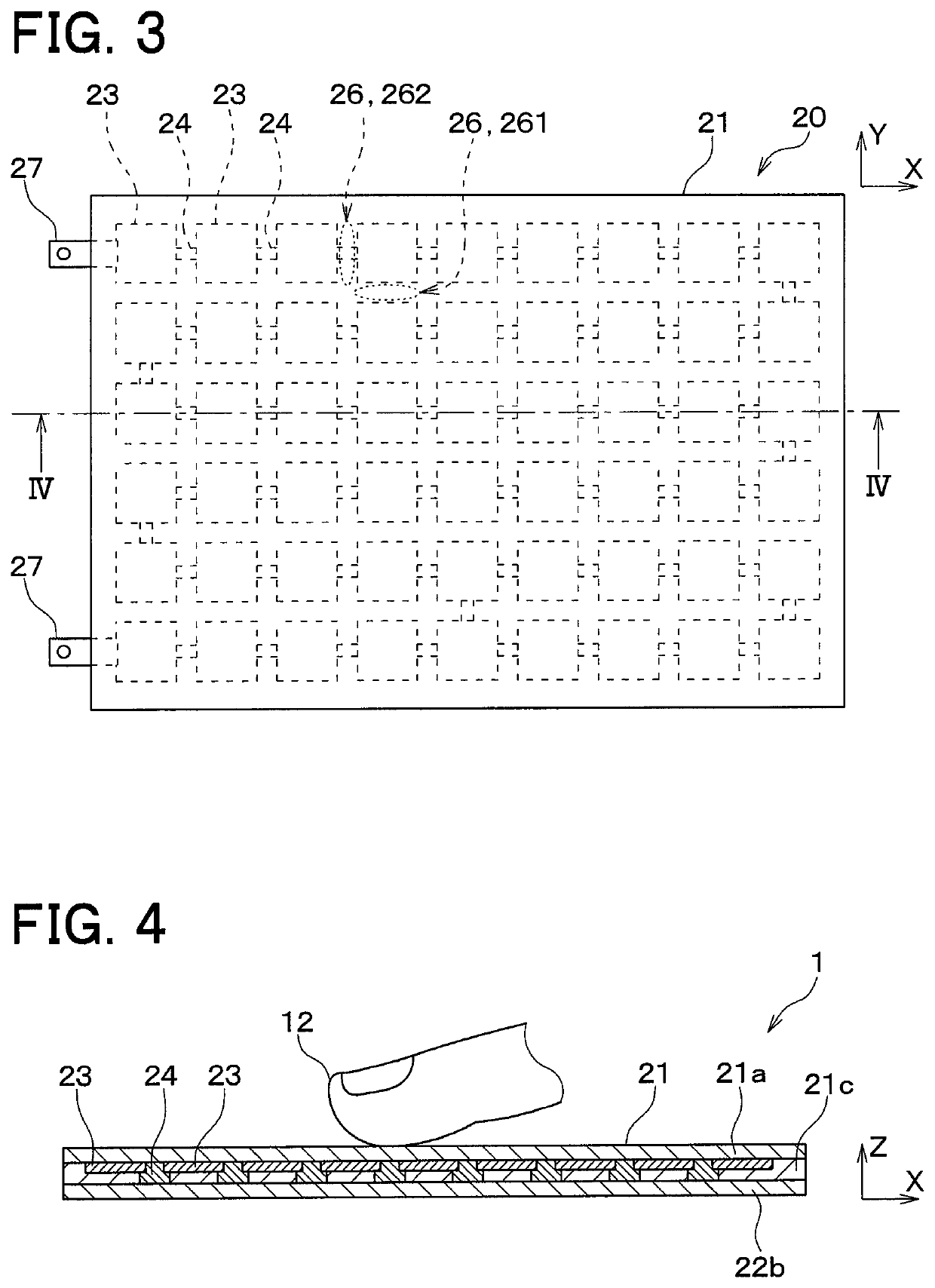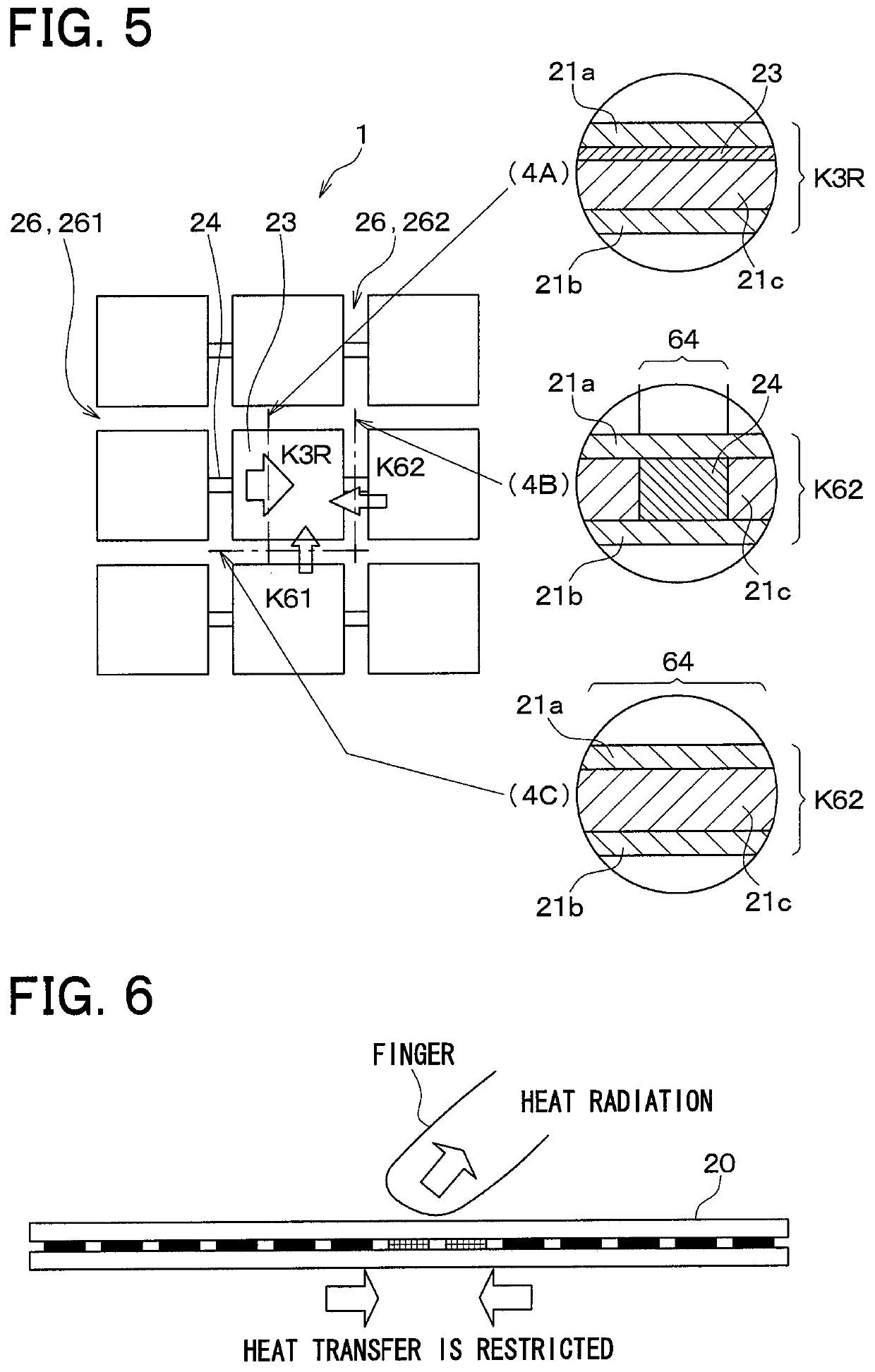Radiation heating device
a heating device and radiation technology, applied in the field of radiation heating devices, can solve the problems of user's thermal unconformity, the surface temperature of the heat radiation portion gradually rises, etc., and achieve the effects of reducing heat conductivity, reducing heat transfer, and reducing the temperature of the contact site with the obj
- Summary
- Abstract
- Description
- Claims
- Application Information
AI Technical Summary
Benefits of technology
Problems solved by technology
Method used
Image
Examples
first embodiment
[0043]The first embodiment will be described below with reference to FIG. 1 to FIG. 8. As illustrated in FIG. 1, a radiation heating device 10 in the first embodiment is installed in the interior of a vehicle travelling on a road. The heater device 10 constitutes a part of an indoor heating system. The heater device 10 is an electric heater that receives power from a power source such as a battery and a generator in the vehicle to generate heat. The heater device 10 is formed into a thin plate. In order to heat an object located vertical to the surface of the heater device 10, the heater device 10 radiates radiant heat H mainly in the direction vertical to the surface.
[0044]A seat 11 on which a passenger 12 sits is installed in the interior of the vehicle. The heater device 10 is disposed in the interior to radiate radiant heat H to feet of the passenger 12. The heater device 10 can be used to quickly heat the passenger 12, for example, immediately after activation of another heatin...
second embodiment
[0087]A heater device 10 in the present embodiment has the same configuration as the heater device 10 in the first embodiment. The heater device 10 in the first embodiment lowers the heater control temperature when contact with an object is detected in S100. On the contrary, the heater device 10 in the present embodiment lowers the heater control temperature when contact with the object for a certain time period or more is detected.
[0088]FIG. 12 is a flowchart of the control unit 40 of the heater device 10 in the present embodiment. When the heater device 10 is activated in accordance with the user's operation of the operation unit 50, the control unit 40 determines whether or not contact with the object for a certain time period or more is detected. Here, the certain time period is set to a time elapsed until the user feels thermal discomfort after contact with the heat generation portion 24. Specifically, it is determined whether or not contact with the object for the certain time...
third embodiment
[0091]A heater device 10 in the present embodiment has the same configuration as the heater device 10 in the first embodiment. The control unit 40 of the heater device 10 in the present embodiment determines whether or not local abnormal heat generation of the heater is detected using the resistor 31 that changes in resistance value according to a temperature change, and executes processing of deactivating the heater when the local abnormal heat generation is detected.
[0092]FIG. 13 is a flowchart of the control unit 40 of the heater device 10 in the present embodiment. When the heater device 10 is activated in accordance with the user's operation of a switch of the operation unit 50, the control unit 40 periodically executes processing illustrated in FIG. 13 in addition to the processing illustrated inFIG. 10.
[0093]First, it is determined whether or not local abnormal heat generation caused by any cause of the heater is detected (S300). Specifically, it is determined whether or not ...
PUM
 Login to View More
Login to View More Abstract
Description
Claims
Application Information
 Login to View More
Login to View More - R&D
- Intellectual Property
- Life Sciences
- Materials
- Tech Scout
- Unparalleled Data Quality
- Higher Quality Content
- 60% Fewer Hallucinations
Browse by: Latest US Patents, China's latest patents, Technical Efficacy Thesaurus, Application Domain, Technology Topic, Popular Technical Reports.
© 2025 PatSnap. All rights reserved.Legal|Privacy policy|Modern Slavery Act Transparency Statement|Sitemap|About US| Contact US: help@patsnap.com



